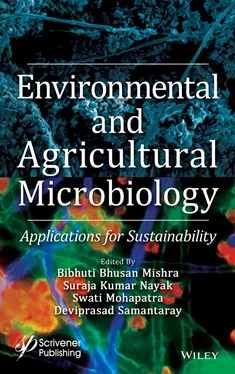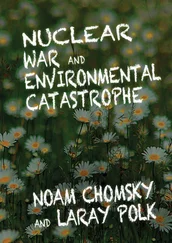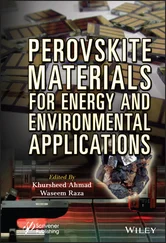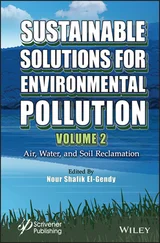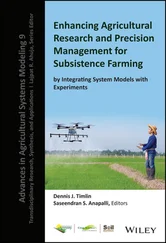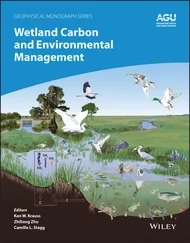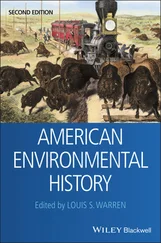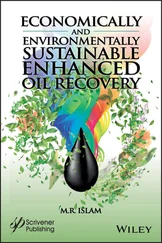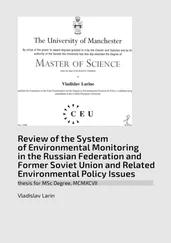1 ...6 7 8 10 11 12 ...26 20. Rohr, J.R., Schotthoefer, A.M., Raffel, T.R., Carrick, H.J., Halstead, N., Hoverman, J.T., Johnson, C.M., Johnson, L.B., Lieske, C., Piwoni, M.D., Schoff, P.K., Beasley, V.R., Agrochemicals increase trematode infections in a declining amphibian species. Nature , 455, 1235, 2008.
21. Brammall, R.A. and Higgins, V.J., The effect of glyphosate on resistance of tomato to Fusarium crown and root rot disease and on the formation of host structural defensive barriers. Can. J. Bot. , 66, 1547, 1988.
22. Fletcher, J.S., Pfleeger, T.G., Ratsch, H.C., Potential environmental risks associated with the new sulfonylurea herbicides. Environ. Sci. Technol. , 27, 2250, 1993.
23. Santos, A. and Flores, M., Effects of glyphosate on nitrogen fixation of free-living heterotrophic bacteria. Lett. Appl. Microbiol. , 20, 349, 1995.
24. Lang, M. and Cai, Z., Effects of chlorothalonil and carbendazim on nitrification and denitrification in soils. J. Environ. Sci. , 21, 458, 2009.
25. Lah, K., Effects of pesticides on human health, in: Toxipedia , http://www.toxipedia.org/display/toxipedia/Effects+of+Pesticides+on+Human+Health.2011.
26. Hicks, B., Agricultural pesticides and human health , National Association of GeoscienceTeachers, http://serc.carleton.edu/NAGTWorkshops/health/case_studies/pesticides.html., United States, 2013.
27. Spear, R., Recognised and possible exposure to pesticides, in: Handbook of pesticide toxicology , W.J. Hayes and E.R. Laws (Eds.), pp. 245–274, Academic, San Diego, CA, 1991.
28. Jabbar, A. and Mallick, S., Pesticides and environment situation in Pakistan (Working Paper Series No. 19) , Sustainable Development Policy Institute, Pakistan, 1994.
29. Boudh, S. and Singh, J.S., Pesticide Contamination: Environmental Problems and Remediation Strategies, in: Emerging and Eco-Friendly Approaches for Waste Management , R.N. Bhargava and P. Chowdhary (Eds.), pp. 245–269, Springer Nature, Singapore, 2019.
30. Culliney, T.W., Pimentel, D., Pimentel, M.H., Pesticides and natural toxicants in foods. Agric. Ecosyst. Environ. , 41, 297–320, 1992.
31. Megharaj, M., Venkateswarlu, K., Rao, S., Metabolism of Monocrotophos and Quinalphos by Algae Isolated from Soil. Bull. Environ. Contam. Toxicol. , 39, 251, 1987.
32. Megharaj, M., Madhavi, D.R., Sreenivasulu, C., Umamaheswari, A., Venkateswarlu, K., Biodegradation of Methyl Parathion by Soil Isolates of Microalgae and Cyanobacteria. Bull. Environ. Contam. Toxicol. , 53, 292, 1994.
33. Cáceres, T.P., Megharaj, M., Naidu, R., Biodegradation of the Pesticide Fenamiphos by Ten Different Species of Green Algae and Cyanobacteria. Curr. Microbiol. , 57, 643, 2008.
34. Petroutsos, D., Wang, J., Katapodis, P., Kekos, D., Sommerfeld, M., Hu, Q., Toxicity and metabolism of p-chlorophenol in the marine microalga Tetraselmis marina. Aquat . Toxicol. , 85, 192, 2007.
35. Yang, S., Wu, R.S.S., Kong, R.Y.C., Biodegradation and enzymatic responses in the marine diatom Skeletonemacostatum upon exposure to 2,4-dichlorophenol. Aquat. Toxicol. , 59, 191, 2002.
36. Ghasemi, Y., Rasoul-Amini, S., Fotooh-Abadi, E., Review: The Biotransformation, Biodegradation and Bioremediation of Organic Compounds by Microalgae. J. Phycol. , 47, 969, 2011.
37. Kuritz, T. and Wolk, C.P., Use of Filamentous Cyanobacteria for Biodegradation of Organic Pollutants. Appl. Environ. Microbiol. , 61, 234, 1995.
38. El-Bestawy, E., El-Salam, Z., Mansy, E.R.H., Potential Use of Environmental Cyanobacterial Species in Bioremediation of Lindane-Contaminated Effluents. Int. Biodeterioration. Biodegrad. , 59, 180, 2007.
39. Dosnon-Olette, R., Trotel-Aziz, P., Couderchet, M., Eullaffroy, P., Fungicides and herbicide removal in Scenedesmus cell suspensions. Chemosphere. , 79, 117, 2010.
40. Zhang, S., Qiu, C.B., Zhou, Y., Jin, Z.P., Yang, H., Bioaccumulation and degradation of pesticide fluroxypyr are associated with toxic tolerance in green alga. Chlamydomonas reinhardtii. Ecotoxicology. , 20, 337, 2012.
41. Singh, D.P., Khattar, J.I.S., Nadda, J., Singh, Y., Garg, A., Kaur, N., Gulati, A., Chlorpyrifos degradation by the cyanobacterium Synechocystis sp. strain PUPCCC 64. Environ. Sci. Pollut. Res. , 18, 1351, 2011.
42. Singh, D.P., Khattar, J.I.S., Kaur, M., Kaur, G., Gupta, M., Singh, Y., Anilofos Tolerance and Its Mineralization by the Cyanobacterium Synechocystis sp. Strain PUPCCC 64. PLoS ONE. , 8, e53445, 2013.
43. Jin, Z.P., Luo, K., Zhang, S., Zheng, Q., Yang, H., Bioaccumulation and catabolism of prometryne in green algae. Chemosphere. , 87, 278, 2012.
44. Kumar, M.S., Aabra, A.N., Min, B., Ei-Dalatony, M.M., Xiong, J., Thajuddin, N., Lee, D.S., Jeon, B.H., Insecticide induced biochemical changes in freshwater microalga. Chlamydomonas mexicana. Environ. Sci. Pollut. Res. , 23, 1091, 2016.
45. Tiwari, B., Chakrabortya, S., Srivastava, A.K., Mishra, A.K., Biodegradation and rapid removal of methyl parathion by the paddy field cyanobacterium. Fischerella sp. Algal. Res. , 25, 285, 2017.
46. Li, X., Schuler, M.A., Berenbaum, M.R., Molecular mechanisms of metabolic resistance to synthetic and natural xenobiotics. Ann. Rev. Entomol. , 52, 231, 2007.
47. Ortiz-Hernández, M.L., Sánchez-Salinas, E., Olvera-Velona, A., Folch-Mallol, J.L., Pesticides in the Environment: Impacts and its Biodegradation as a Strategy for Residues Treatment, in: Pesticides - Formulations, Effects, Fate , M. Stoytcheva (Ed.), pp. 551–574, IntechOpen, United Kingdom, 2011.
48. Thengodkar, R.R. and Sivakami, S., Degradation of Chlorpyrifos by an alkaline phosphatase from the cyanobacterium Spirulina platensis . Biodegradation , 21, 637, 2010.
49. Paliwal, R., Gusain, P., Kaphaliya, B., Uniyal, S., Algal Potential for Inorganic and Organic Pollutants Decontamination, in: Water Biology , D.R. Khanna and R. Bhutiani (Eds.), pp. 309–317, Discovery Publishing House Pvt. Ltd., New Delhi, 2018.
50. Chino-Flores, C., Dantán-González, E., Vázquez-Ramos, A., Tinoco-Valencia, R., Díaz-Méndez, R., Sánchez-Salinas, E., Castrejón-Godínez, M.L., Ramos-Quintana, F., Ortiz-Hernández, M.L., Isolation of the opdE gene that encodes for a new hydrolase of Enterobacter sp. capable of degrading organophosphorus pesticides. Biodegradation , 23, 387, 2012.
51. Mulbry, W.W. and Karns, J.S., Parathion hydrolase specified by the Flavobacterium opd gene: Relationship between the gene and protein. J. Bacteriol. , 171, 6740, 1989.
52. Ortiz-Hernández, M.L., Quintero-Ramírez, R., Nava-Ocampo, A.A., Bello-Ramírez, A.M., Study of the mechanism of Flavobacterium sp. for hydrolyzing organophosphate pesticides. Fundam. Clin. Pharmacol. , 17, 717, 2003.
53. Zhang, R., Cui, Z., Jiang, J., Gu, X., Li, S., Diversity of organophosphorus pesticides degrading bacteria in a polluted soil and conservation of their organophosphorus hydrolase genes. Can. J. Microbiol. , 5, 337, 2005.
54. Chungjatupornchai, W. and Fa-Aroonsawat, S., Biodegradation of Organophosphate Pesticide Using Recombinant Cyanobacteria with Surfaceand Intracellular-Expressed Organophosphorus Hydrolase. J. Microbiol. Biotechnol. , 18, 946, 2008.
55. Mittler, R., Oxidative stress, antioxidants and stress to tolerance. Trends. Plant. Sci. , 7, 405, 2002.
56. Maurino, V.G. and Flugge, U., Experimental systems to assess the effects of reactive oxygen species in plant tissues. Plant. Signal. Behav. , 3, 923, 2008.
57. Alscher, R.G., Erturk, N., Heath, L.S., Role of superoxide dismutases (SODs) in controlling oxidative stress in plants. J. Exp. Bot. , 53, 1331, 2002.
Читать дальше
